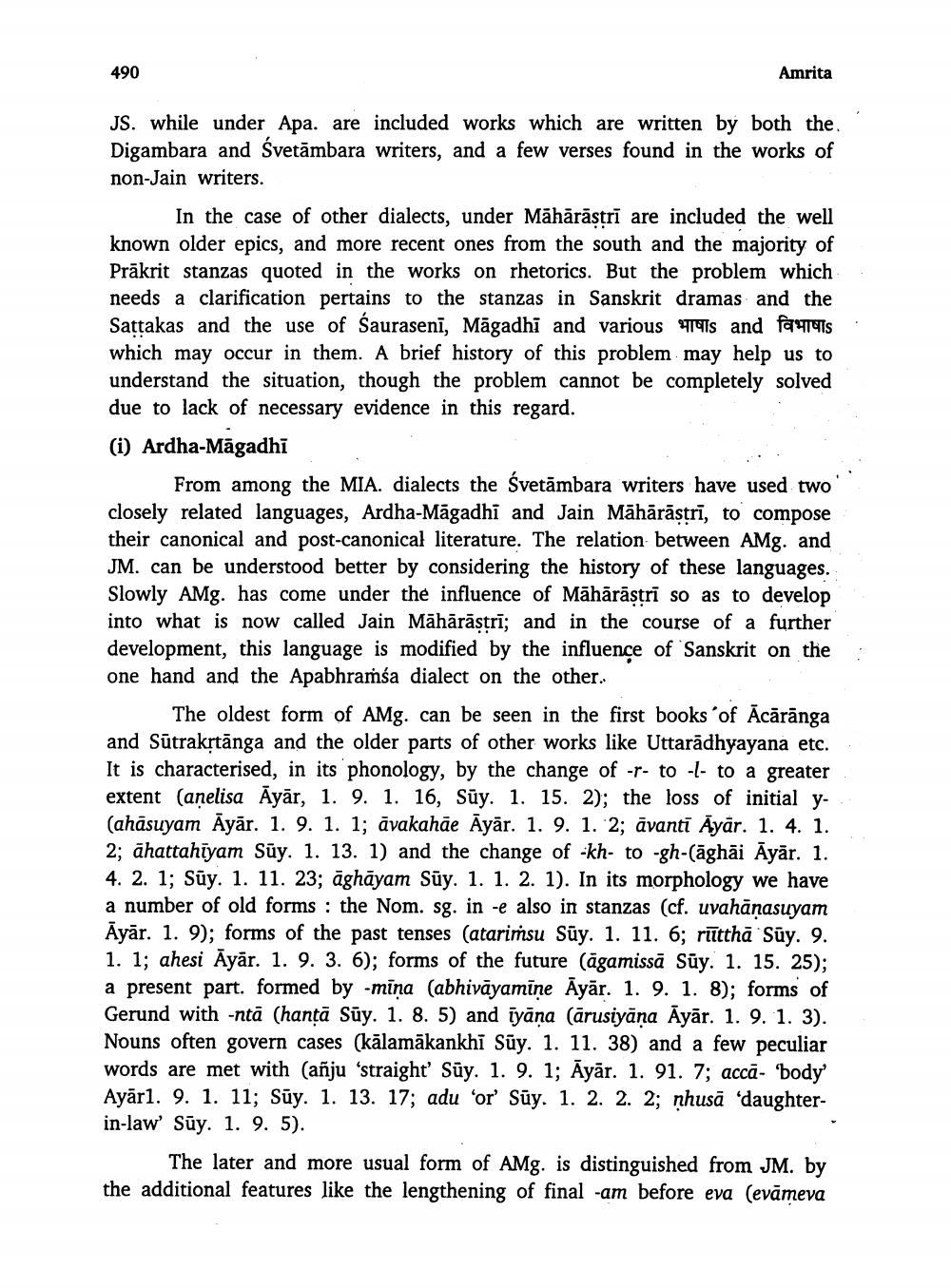________________
490
Amrita
JS. while under Apa. are included works which are written by both the. Digambara and Svetāmbara writers, and a few verses found in the works of non-Jain writers.
In the case of other dialects, under Māhārāstrī are included the well known older epics, and more recent ones from the south and the majority of Prākrit stanzas quoted in the works on rhetorics. But the problem which needs a clarification pertains to the stanzas in Sanskrit dramas and the Sattakas and the use of Saurasenī, Māgadhi and various 90s and fans: which may occur in them. A brief history of this problem may help us to understand the situation, though the problem cannot be completely solved due to lack of necessary evidence in this regard. (i) Ardha-Māgadhī
From among the MIA. dialects the Svetāmbara writers have used two closely related languages, Ardha-Māgadhi and Jain Māhārāstrī, to compose their canonical and post-canonical literature. The relation between AMg. and JM. can be understood better by considering the history of these languages. Slowly AMg. has come under the influence of Māhārāstrī so as to develop into what is now called Jain Māhārāstrī; and in the course of a further development, this language is modified by the influence of Sanskrit on the one hand and the Apabhraṁsa dialect on the other.
The oldest form of AMg. can be seen in the first books ‘of Ācārānga and Sūtrakstānga and the older parts of other works like Uttarādhyayana etc. It is characterised, in its phonology, by the change of -r- to -l- to a greater extent (anelisa Ayār, 1. 9. 1. 16, Sūy. 1. 15. 2); the loss of initial y (ahāsuyam āyār. 1. 9. 1. 1; āvakahāe āyār. 1. 9. 1. 2; āvanti Āyår. 1. 4. 1. 2; āhattahiyam Sūy. 1. 13. 1) and the change of -kh- to -gh-(āghāi Āyār. 1. 4. 2. 1; Sūy. 1. 11. 23; äghāyam Sūy. 1. 1. 2. 1). In its morphology we have a number of old forms: the Nom. sg. in -e also in stanzas (cf. uvahānasuyam Āyār. 1. 9); forms of the past tenses (atarimsu Sūy. 1. 11. 6; rütthā Sūy. 9. 1. 1; ahesi Āyār. 1. 9. 3. 6); forms of the future (agamissā Sūy. 1. 15. 25); a present part. formed by -mīņa (abhivāyamīne āyār. 1. 9. 1. 8); forms of Gerund with -ntā (hanţā Sūy. 1. 8. 5) and īyāna (ārusiyāna Āyār. 1. 9. 1. 3). Nouns often govern cases (kālamākankhi Sūy. 1. 11. 38) and a few peculiar words are met with (añju 'straight' Sūy. 1. 9. 1; Āyār. 1. 91. 7; acca- body Ayār1. 9. 1. 11; Sūy. 1. 13. 17; adu for' Sūy. 1. 2. 2. 2; nhusā daughterin-law Sūy. 1. 9. 5).
T
The later and more usual form of AMg. is distinguished from JM. by the additional features like the lengthening of final -am before eva (evāmeva




